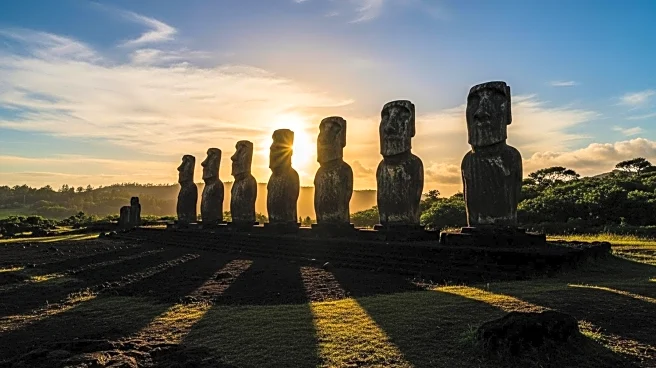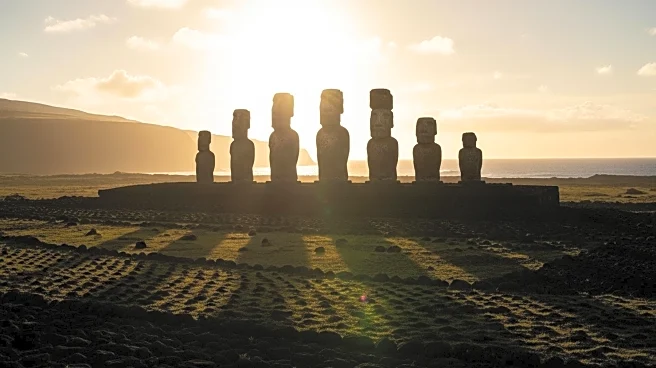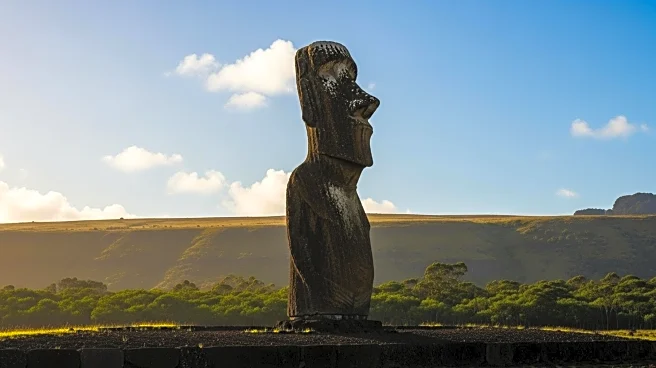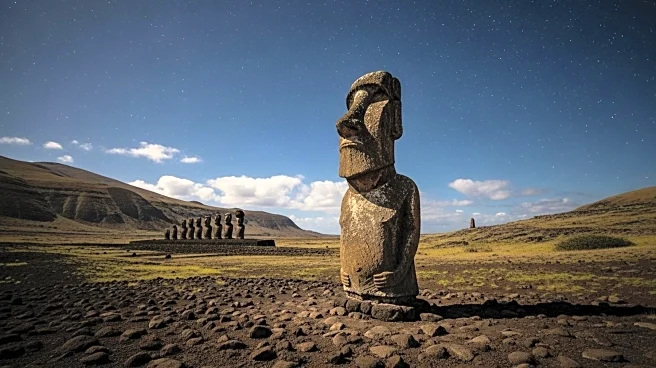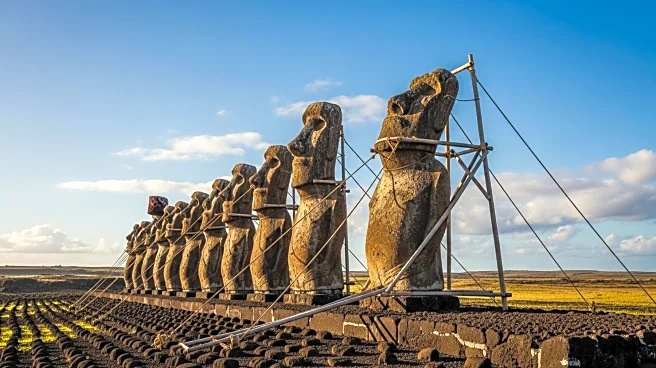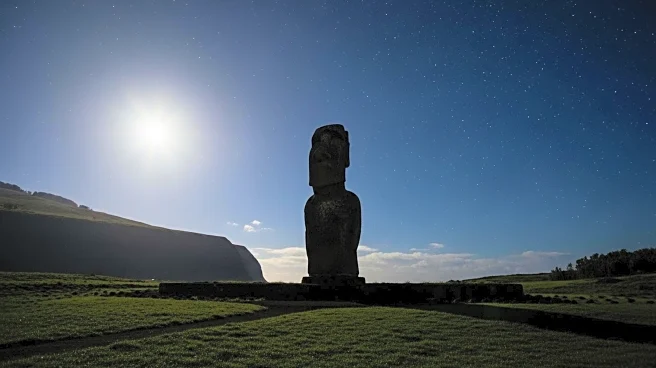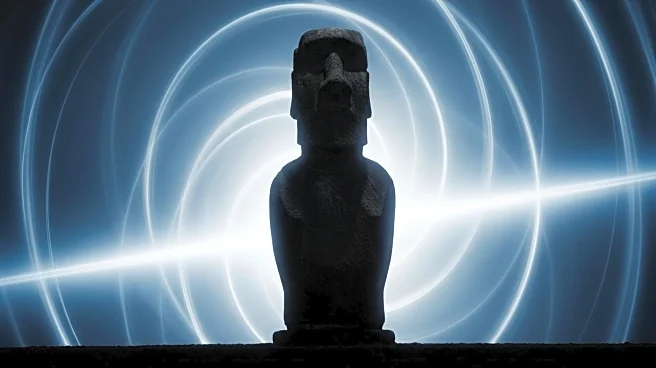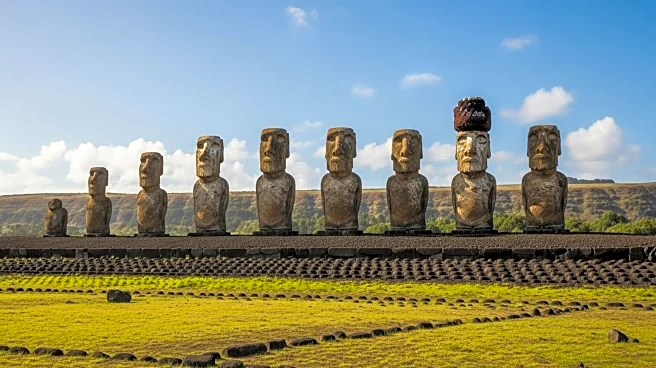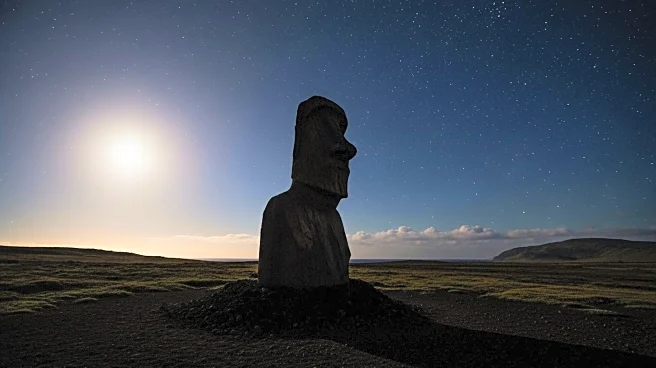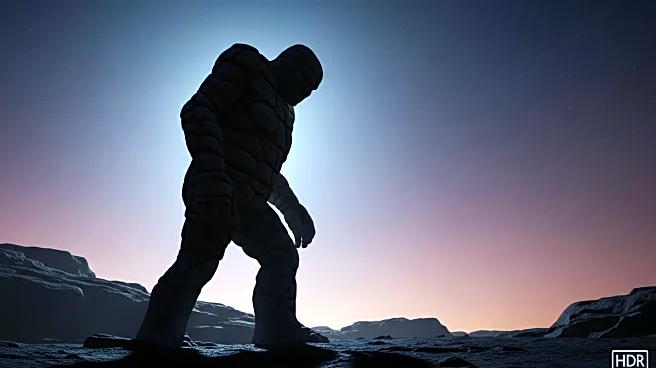What's Happening?
Researchers from Binghamton University and the University of Arizona have proposed a new theory regarding the movement of Easter Island's iconic moai statues. The study suggests that these statues, weighing up to 80 tons, were not dragged but 'walked' to their locations using a side-to-side rocking motion facilitated by ropes. This theory aligns with oral traditions of the Rapa Nui people, who have long claimed the statues walked from their quarry to their ceremonial sites. The researchers tested their hypothesis by constructing a replica moai and successfully moving it using minimal manpower, demonstrating the feasibility of this method.
Why It's Important?
This discovery challenges previous theories that the statues were dragged on wooden sleds, which seemed implausible given the island's lack of trees. The new understanding highlights the ingenuity of the Rapa Nui people, showcasing their ability to solve complex engineering challenges with limited resources. It also emphasizes the importance of considering indigenous knowledge in archaeological research. The findings could reshape historical narratives about Easter Island and contribute to broader discussions on ancient engineering and cultural practices.
What's Next?
Further research may focus on exploring the network of 'moai roads' on Easter Island, which were previously thought to be ceremonial but now appear to have been functional paths for moving the statues. Archaeologists might also investigate other aspects of Rapa Nui culture to gain deeper insights into their societal organization and technological capabilities. The study encourages a reevaluation of other historical mysteries where indigenous knowledge might provide crucial insights.
Beyond the Headlines
The study underscores the importance of interdisciplinary approaches in archaeology, combining physics, anthropology, and history to solve longstanding mysteries. It also highlights the potential for indigenous oral traditions to offer valuable information that can lead to groundbreaking discoveries. This case may inspire similar approaches in other regions, fostering a more inclusive and comprehensive understanding of ancient cultures.

